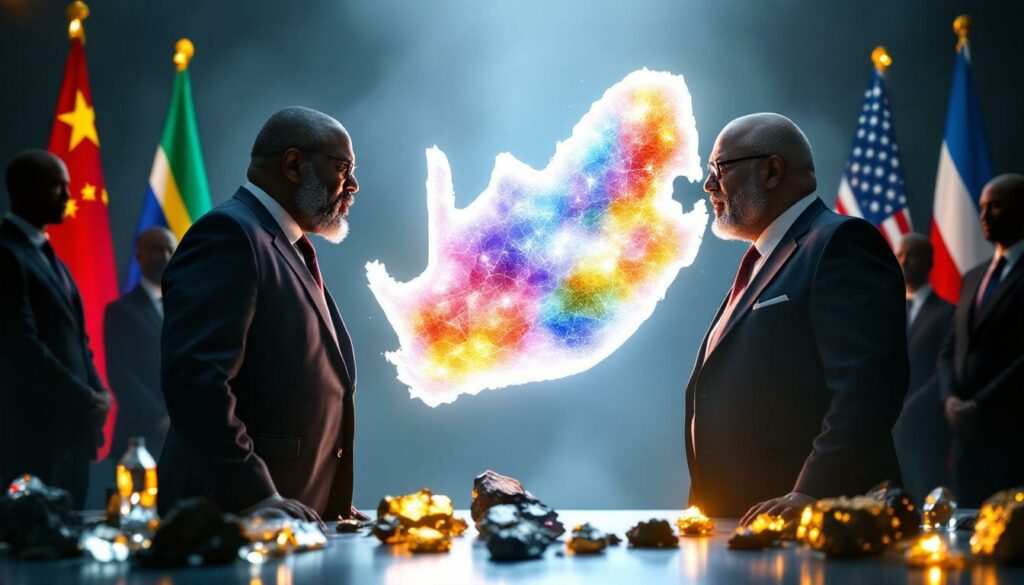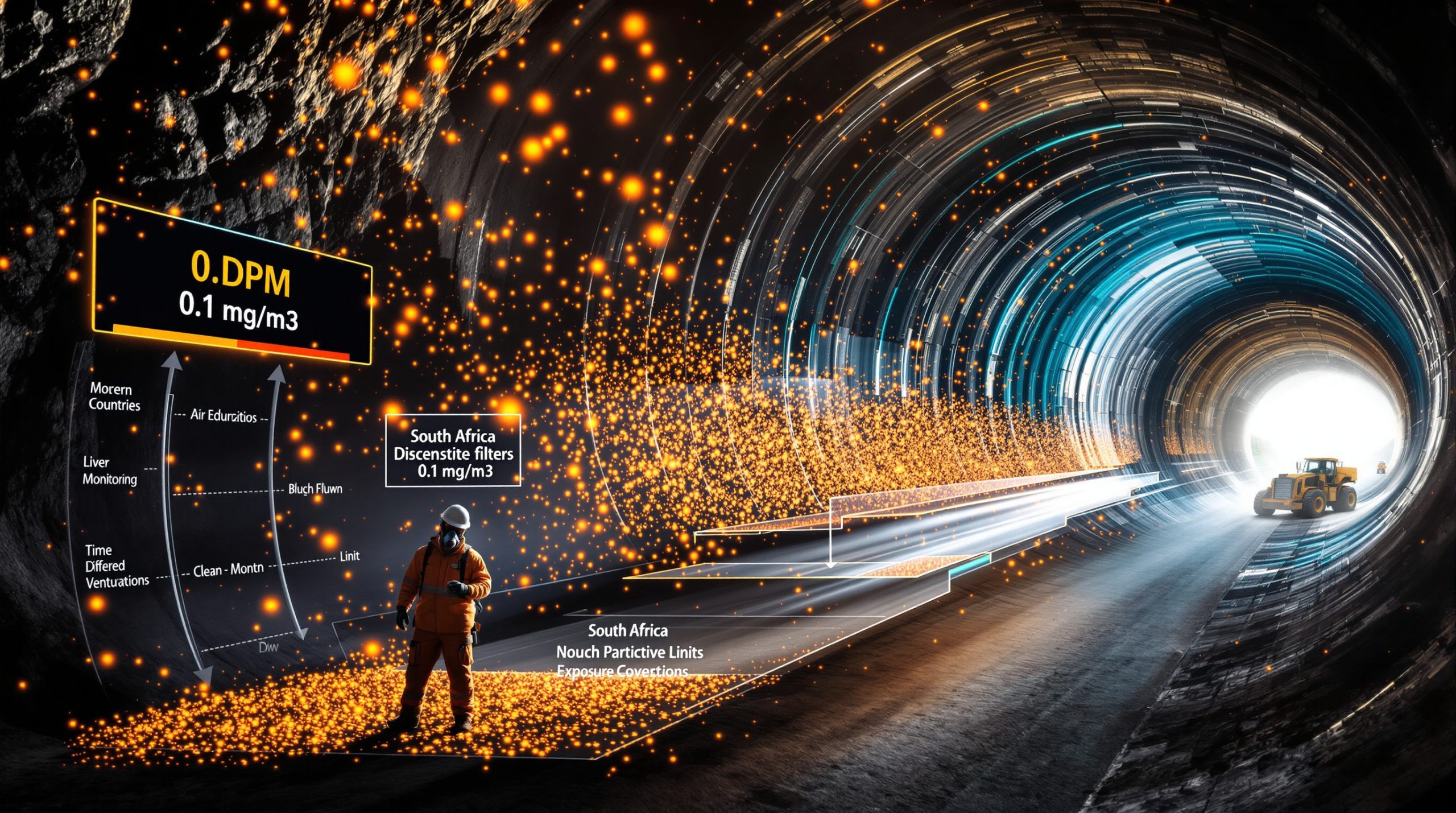South African Minister and Top Miner Clash Over US Critical Minerals Strategy
The recent diplomatic tension between South Africa's Mines Minister Gwede Mantashe and mining giant Sibanye Stillwater has exposed fundamental differences in approaches to critical minerals energy transition. This high-profile disagreement highlights deeper issues around national sovereignty, industry representation, and competing visions for South Africa's valuable mineral resources in an increasingly competitive global market.
The Root Cause of the Dispute
The confrontation erupted when Minister Mantashe publicly rejected a proposal developed by business leaders, including Sibanye Stillwater CEO Neal Froneman and board member Rick Menell. Their initiative aimed to offer the United States privileged access to Africa's critical minerals through South Africa as an entry point. A business delegation of approximately six people traveled to the US earlier in 2025 "with the full knowledge" of President Ramaphosa, according to Bloomberg News reporting.
Minister Mantashe's objections were multifaceted and pointed:
- Failure to consult with the Department of Mineral Resources and Energy
- Bypassing the Minerals Council South Africa (the industry's official representative body)
- Perceived advancement of specific corporate interests rather than national priorities
- Use of language allegedly mimicking Trump-era slogans
"I did talk to people who put it together," Mantashe told Bloomberg News, mentioning Menell by name. "They didn't talk to us and there can be nothing about mining without" input from the ministry and broader industry. He specifically objected to proposal wording "along the lines of 'make minerals great again,'" which he emphasized "is not our language."
The business delegation envisioned "South Africa providing a springboard into Africa to develop relations and explore the potential to supply critical minerals for the US," according to Bloomberg's reporting—a vision that clashed with the government's more nationally-focused approach.
Competing Mineral Strategies and Priorities
The fundamental disconnect between government and industry strategies appears insurmountable:
Business proposal focus:
- Creating international partnerships prioritizing US access
- Using South Africa as a gateway for broader African mineral development
- Aligning with US strategic interests to attract investment
- Positioning South African mining within global supply chains
Government strategy focus:
- Prioritizing South Africa's domestic industrial needs
- Identifying locally abundant resources as strategically critical
- Maintaining sovereign control over resource development
- Developing a "cross-cutting strategy for everyone" rather than US-specific access
"We don't want a critical minerals strategy for the US," Mantashe told Bloomberg. "We want a cross-cutting strategy for everyone."
US-South Africa Relations: Diplomatic Context
The minerals dispute occurs amid deteriorating US-South Africa relations since Trump's critical minerals order and his inauguration in January 2025, characterized by:
- Trump administration's claims about White farmer treatment in South Africa
- US concerns about South Africa's relationships with Russia and China
- South Africa's international legal actions drawing US criticism
- Implementation of 30% US tariffs on many South African exports—the highest on any country in sub-Saharan Africa
Important context: Mineral exports are largely excluded from these US tariffs, preserving a crucial economic relationship despite broader tensions.
Despite political friction, the economic ties remain substantial:
- The US is South Africa's second-largest trading partner after China
- Bilateral trade reached $21.6 billion in 2024, according to IMF data
- South Africa maintains a $7.7 billion trade surplus with the US as of 2024
- Mining products remain central to this economic relationship
South Africa's Official Critical Minerals Strategy
The government's strategy, approved by the cabinet in May 2025, identifies resources as critical based on South Africa's domestic abundance and industrial needs:
South Africa's official critical minerals list:
- Coal
- Chrome ore
- Iron ore
- Manganese
- Platinum
This list notably differs from US and Western critical minerals priorities, which typically focus on materials essential for renewable energy technologies and digital infrastructure.
Strategic Omissions and Their Implications
South Africa's critical minerals strategy pivot conspicuously excludes minerals that are:
- Central to global technology and energy transitions
- Found in limited abundance within South Africa's borders
- Key to US supply chain security concerns
These notable omissions include copper, cobalt, and lithium—minerals that Bloomberg describes as "key to global electronics, battery, artificial intelligence and renewable energy industries."
The exclusion appears deliberate rather than oversight, with Minister Mantashe acknowledging that South Africa "doesn't produce in large quantities" of these minerals that Western nations prioritize. This approach emphasizes leveraging South Africa's existing mineral strengths rather than aligning with external priorities.
US Global Critical Minerals Strategy
The United States has been actively developing mineral supply agreements with multiple countries as part of a coordinated strategy to reduce dependence on China-controlled supply chains:
- Proposed mineral supply deals with Ukraine, Democratic Republic of Congo, and Rwanda
- Focus on securing access to technology-critical minerals like copper, cobalt, and lithium
- Emphasis on securing minerals for electronics, batteries, AI systems, and renewable energy
- Strategic goal of "cutting China's hold on supply chains for the minerals" (Bloomberg News)
The US approach reflects a recognition that critical minerals access has become a central national security concern, particularly as digital transformation and energy transition accelerate globally.
Industry-Government Friction: Broader Implications
The critical minerals dispute highlights persistent tensions between South Africa's mining industry and government that extend beyond this specific incident:
Regulatory challenges:
- Industry reports of excessive bureaucratic hurdles hampering operations
- Processing delays affecting project timelines (2,525 mining applications reportedly unprocessed in 2023-2024)
- Minerals Council South Africa reported in May 2025 that new draft regulations failed to include its inputs
"Government routinely issues bills and amendments to existing policy without involving or considering other stakeholders," said Neal Froneman, Sibanye Stillwater's outgoing CEO, pointing to a pattern of industry exclusion rather than an isolated incident.
Competing Visions for South Africa's Mining Future
The clash reveals fundamentally different perspectives on how South Africa's mining industry trends should develop:
Industry vision:
- International partnerships driving investment and growth
- Integration into global supply chains, particularly with Western markets
- Policy stability and investor-friendly regulatory environment
- Leveraging South Africa's mining expertise beyond its borders
Government vision:
- National sovereignty over resource development decisions
- Prioritization of domestic industrialization needs
- Balancing relationships between global powers rather than alignment with US
- Development of local processing and South African mineral beneficiation capabilities
Froneman's critique was particularly pointed: "Both our foreign and local mining industry policies and the truculent manner of the minister make South Africa a destination of little interest to foreign mining capital investment, especially from the US."
Geopolitical Positioning and Mineral Diplomacy
South Africa's stance on critical minerals reflects sophisticated geopolitical calculations:
- Balancing relationships with the US, China, and other global powers
- Leveraging mineral resources for diplomatic advantage rather than simple commercial gain
- Asserting sovereignty over natural resource decisions
- Positioning as an independent actor in the global minerals space
This approach may limit certain investment opportunities but preserves South Africa's freedom to develop strategic relationships across the global economic landscape without becoming overly dependent on any single partner.
Market Implications for Global Supply Chains
The diplomatic tensions could have several effects on mineral markets:
- Potential redirection of US investment toward other African mineral producers
- Price premiums for reliable, geopolitically secure mineral supplies
- Accelerated development of alternative sources for critical minerals
- Delayed development timelines for South African mining projects requiring foreign capital
For global manufacturers and technology companies, the dispute underscores the growing complexity of securing stable critical mineral supplies in an increasingly fragmented geopolitical environment.
Potential Paths Forward
Several scenarios could emerge from this fundamental disagreement:
-
Compromise approach: Development of sector-specific cooperation frameworks that balance national sovereignty with international partnership opportunities
-
Continued parallel strategies: Government maintains domestic focus while industry pursues international partnerships independently where possible
-
Regional coordination: South Africa works with neighboring countries to develop a regional minerals strategy that preserves collective bargaining power
-
Economic pressure driving alignment: Market realities and investment patterns eventually influence policy positions toward greater international cooperation
The resolution will likely depend on political developments in both South Africa and the US, global mineral market conditions, competitive pressures from other mineral-producing nations, and corporate investment decisions by major mining companies.
South Africa-US Critical Minerals Dispute: Key Questions Answered
What specific actions did Minister Mantashe take against the business proposal?
Minister Mantashe declined to advocate for the business leaders' proposal to President Ramaphosa before his May 21 meeting with President Trump. Instead, he issued a government statement on the cabinet's approval of his department's own critical minerals strategy, which focused on South Africa's domestic needs rather than US priorities. He also publicly criticized the proposal's development process and content.
How does South Africa's critical minerals strategy differ from other African nations?
Unlike countries such as the Democratic Republic of Congo and Rwanda that have engaged directly with US critical minerals initiatives, South Africa has taken a more independent approach focused on minerals it produces in abundance (coal, chrome, iron ore, manganese, platinum) rather than those prioritized in global technology supply chains (copper, cobalt, lithium).
What is Sibanye Stillwater's position in South Africa's mining industry?
Sibanye Stillwater is described by Bloomberg News as South Africa's biggest mining company, giving its CEO Neal Froneman significant influence in industry discussions. However, the dispute highlights that even major players face challenges in aligning with government mineral policy. Froneman is retiring later in 2025, potentially changing the company's approach to government relations.
Has the US successfully established critical minerals partnerships with other African nations?
Yes, the US has proposed or established mineral supply deals with several African countries, including the Democratic Republic of Congo and Rwanda, as part of its strategy to reduce dependence on Chinese-controlled supply chains. These agreements typically focus on technology-critical minerals like copper and cobalt that are essential for renewable energy and digital technologies.
What is the Minerals Council South Africa's role in this dispute?
The Minerals Council South Africa, which represents most mining companies operating in the country, was reportedly not consulted in the development of the business leaders' proposal. Minister Mantashe cited this lack of broader industry involvement as one reason for his objection. The Council has separately noted that government regulatory processes often fail to incorporate industry input, suggesting systemic communication challenges.
What investment challenges does South Africa's mining sector face?
The sector faces significant regulatory hurdles, including processing delays (with 2,525 mining applications reportedly unprocessed in 2023-2024), policy uncertainty, and what industry leaders describe as insufficient consultation. These challenges may discourage foreign investment, particularly from US sources concerned about both regulatory stability and geopolitical alignment.
Disclaimer: This article contains analysis of evolving diplomatic and economic situations. Future outcomes may differ significantly from the scenarios described based on political developments, market conditions, and policy changes. Readers should consult multiple sources when making investment or policy decisions related to critical minerals markets.
Want to Spot the Next Major ASX Discovery Before the Market?
Discover why major mineral discoveries like De Grey Mining and WA1 Resources can lead to exceptional returns by exploring Discovery Alert's dedicated discoveries page, where their proprietary Discovery IQ model transforms complex mining announcements into actionable investment insights for ASX traders and investors.




